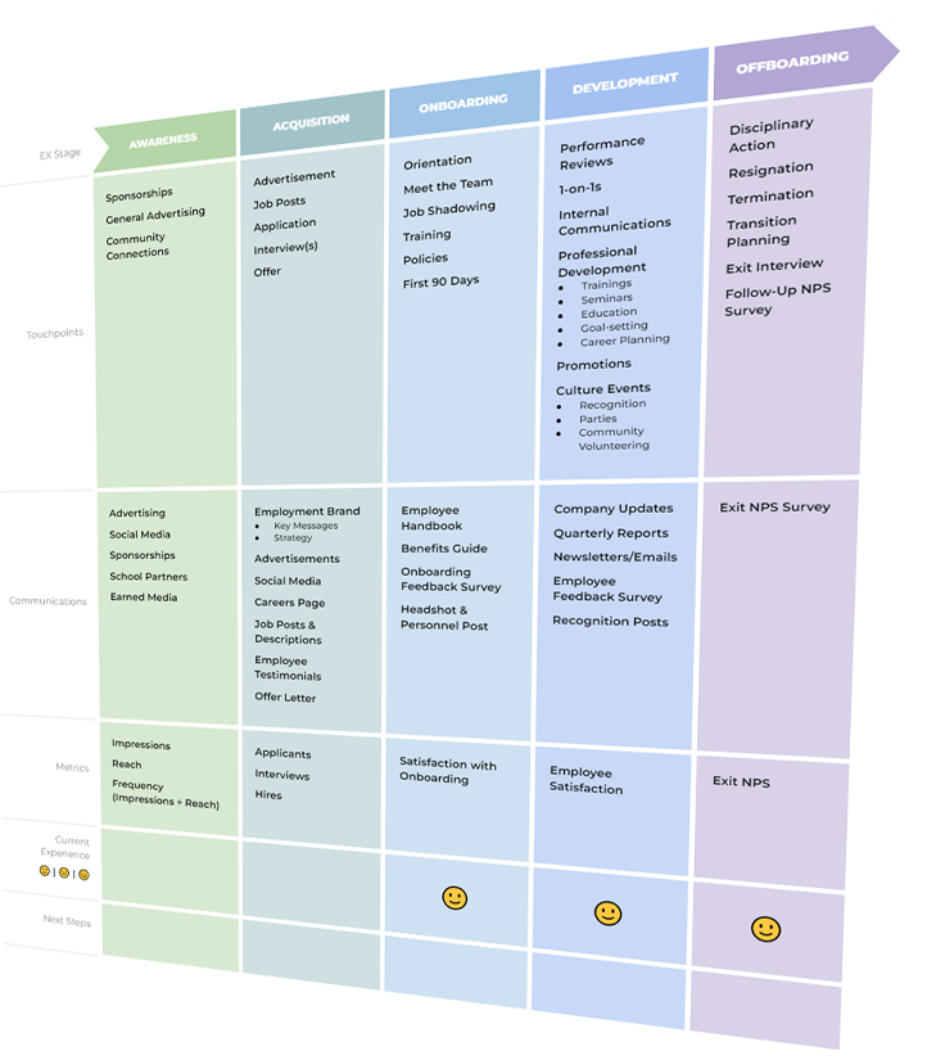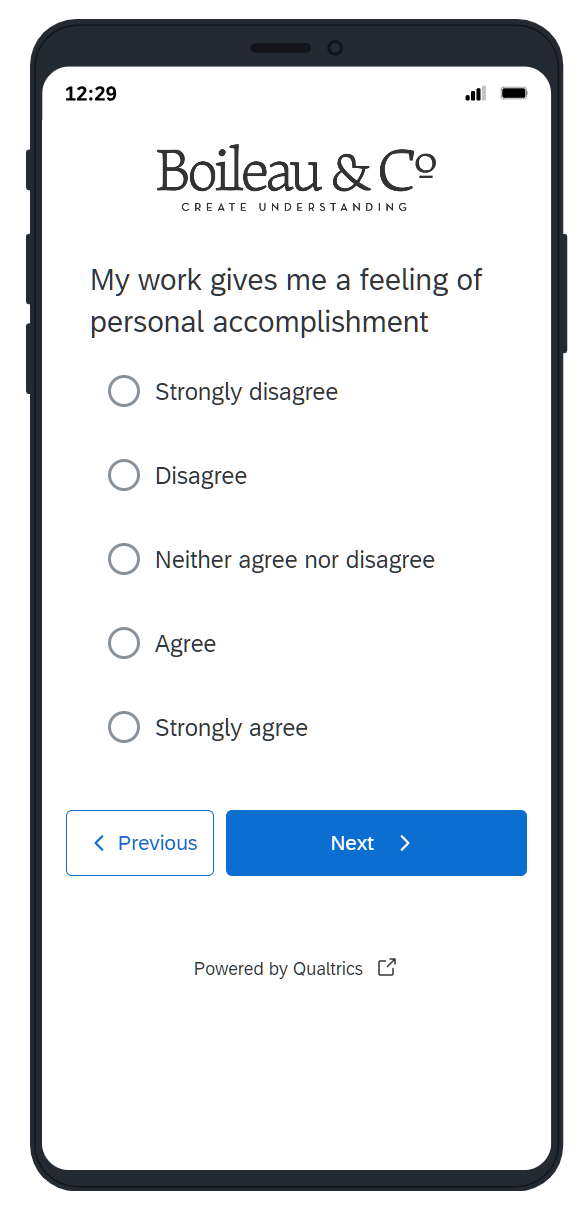The Difference between Managed Web Services and Project-Based Web Services in 2 Charts
Background
An automation solutions provider approached our team with an employee experience challenge. Providing the advanced solutions you’ll find in the facilities of major brands like Nissan, Rivian and Coca-Cola, our client’s employees work in high-stakes environments with exacting standards for quality and tight-deadlines. And because they frequently contract on-site commissioning services, many employees are required to travel for their jobs on a regular basis, which contributes to job stress.
Finally, the company was in the process of rolling out a new enterprise resource planning (ERP) system. As with the introduction of any new technology, the training and changes to process could make communication difficult.

The Challenge
Just six months after cutting the ribbon on their new facility, business was booming and projects were booked months out.
1. Along with the size of their space, their workload was scaling rapidly, and they knew that employee engagement and cooperation were going to be key to their continued growth.
2. At the same time, it was important to them to protect and nurture the strong workplace culture that had brought them this far.

An Employee Journey visually maps out each touchpoint employees have with their organization.
Understanding the Employee Journey
Our first task was to create clarity and understanding around employee experience using employee journey mapping. An employee journey map is a diagram that describes all of the communication touchpoints between team members of an organization throughout their employment—from the first time they hear about the brand through their exit interview and beyond. The discipline of mapping helped us identify EX strengths as well as gaps to address going forward.
Establishing Baseline Metrics
Second, we knew it was important to establish a baseline in order to measure the effectiveness of communication interventions. While EX is notoriously difficult to measure, we are fortunate to have access to industry-leading measures through Qualtrics experience management solutions, which are tested and verified by industrial and organizational (IO) psychologists. Using a blend of tried-and-true Qualtrics metrics as well as a few measures tailored to our client, we conducted a survey of the entire organization to establish our baseline and identify key opportunities for improvement.

Survey Findings
Initial analyses suggested that overall employee experience was quite good—employees were satisfied with compensation and professional development, and they felt empowered with the autonomy to do their work well. However, there were also a few areas for improvement.
- Internal communication—particularly the transmission of information between teams and information about important activities in the company.
- Work processes. Interestingly, this problem did not generalize to relationships with management. It was the processes themselves (not the people who run them) that individuals felt needed improvement.
- Work-Life Balance. Some individuals also felt an impact on their work-life balance due to scaling of workload and frequent travel.
- Company vision. Following the company’s rapid expansion, the tight-knit team was looking to leadership to learn where the company was heading in the long term.
Many team members also didn’t feel that a clear vision of the future of the company was communicated to them. Further analysis showed us that the team was lacking a clear vision of the future of the company. After the company’s rapid expansion, the tight-knit team was looking to leadership to learn where the company was heading.
Finally, statistical analysis revealed that one department in particular felt these tensions to a greater extent than other departments, which let us focus our interventions on that department specifically.
Interventions Rooted in Communication
Based on the results of the survey, we recommended several action steps that would improve communication and work process and find ways to professionally acknowledge stressors.
1. Semiannual EX Reporting & Transparency
Our first recommendation was to share the findings (the good, the bad, and the ugly) with the team. Research has shown that a leadership team that demonstrates listening and reflection (i.e., inclusiveness) creates an environment of psychological safety, and by extension, improves employee engagement. Our client had historically been open and honest with their team, so they were excited to share the results as well.
We worked with leadership to draft professional communication to cover areas of improvement and celebrate the wins of the company. This ensured the team understood that their voices were heard and were prepared for the changes to come. Since then, the company has committed to measuring EX twice each year and providing reports of those findings to employees.
2. Microsoft Teams Rollout
The client recognized the need to incorporate a standardized way to communicate with their entire team. They faced several barriers to this task since many team members had limited access to email throughout their work day. Because they were already a standard Microsoft office, the company was interested in trying Microsoft Teams for company communication but wanted help rolling it out.
Teams would allow the client to continue with email communication with their customers while integrating a chat feature to use with their employees. Because a large portion of the team didn’t regularly check their email, a mobile-device based chat app made for a good solution.
During their Teams rollout, we supported communication around expectations and supplied templates and best practices on consistent company communication. Our management of the rollout went smoothly, and the majority of team members were compliant with Microsoft Teams within two months of the initial launch.
3. Candidate Experience Optimization
Part of our strategy was ensuring that all future employees received better communication from the onset of their employment. Our first step in this process was defining a clear candidate experience, including:
- Developing a robust Indeed profile
- Rewriting and standardizing job descriptions for clarity and emphasis on company values.
- Redesigning and the careers section of the company website
- Updates to the employee handbook for smooth onboarding
4. Company Vision Communications
To address issues of company vision, we led a company vision session with leadership to develop long, mid, and short-term vision for the company. The session also led to updates to company values to better reflect the company they had become. Finally, we produced a polished presentation for our client to use to share company values, vision and direction with team members on a quarterly basis.
Outcomes
Six months after the initial employee experience survey, we issued the same survey once again to look for any improvements or new problem areas. Multiple factors contributed to these metrics, including a seasonal slow down, which would have resulted in reduced travel for some employees. However, overall, the company saw improvements to EX metrics across the board, especially in the following areas:
- Overall Employee Experience (measured with NPS)
- Communication
- Process (particularly in departments where it had previously been low)
- Empowerment/authority, professional
- Professional Development
- Well-being
- Work-Life Balance
Evidence-Based Employee Experience Solutions
After the results of the second employee experience survey, both the client and our team were extremely encouraged by the effectiveness of the communications work we did together. We’ve established a plan for phase two of improving employee experience which will include a company visioning session and more employee onboarding tools.
